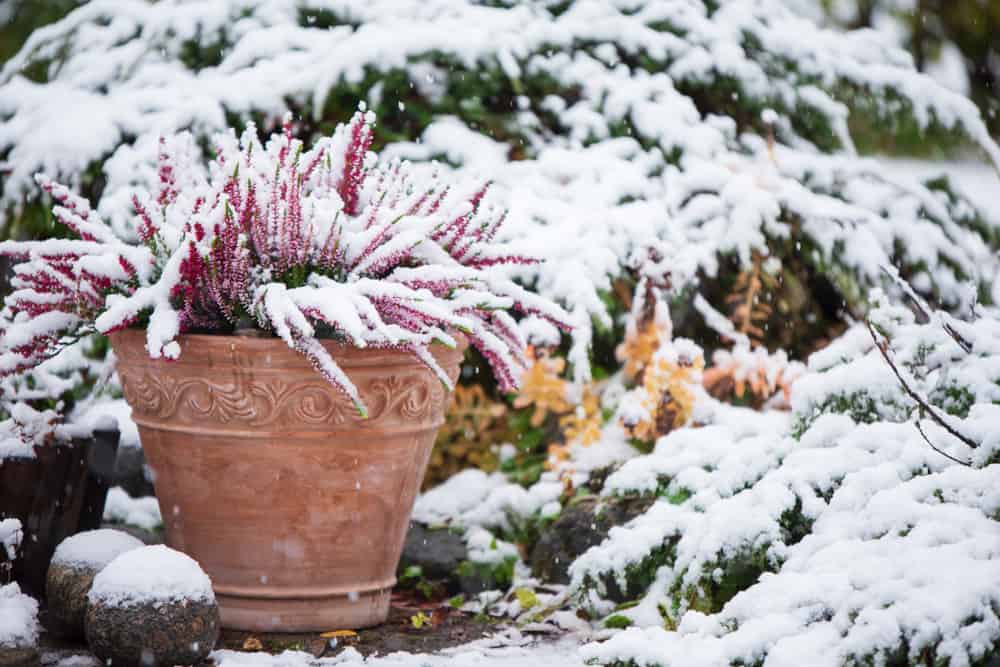
Winter is a difficult time to find interest and color in containers. Most plants are either dormant or don’t perform as well in cold climates, making our containers appear dull and dreary.
There are, however, a few good plants that will shine brightly in the bleakness of winter, providing a touch of color planted on their own or with other compatible plants.
In this list, you will find fantastic plants that are tough and hardy with excellent foliage. Some are even great bloomers. Winter containers need not be dull and boring, they can become the highlight of the season.
Tough Perennials
Hellebores
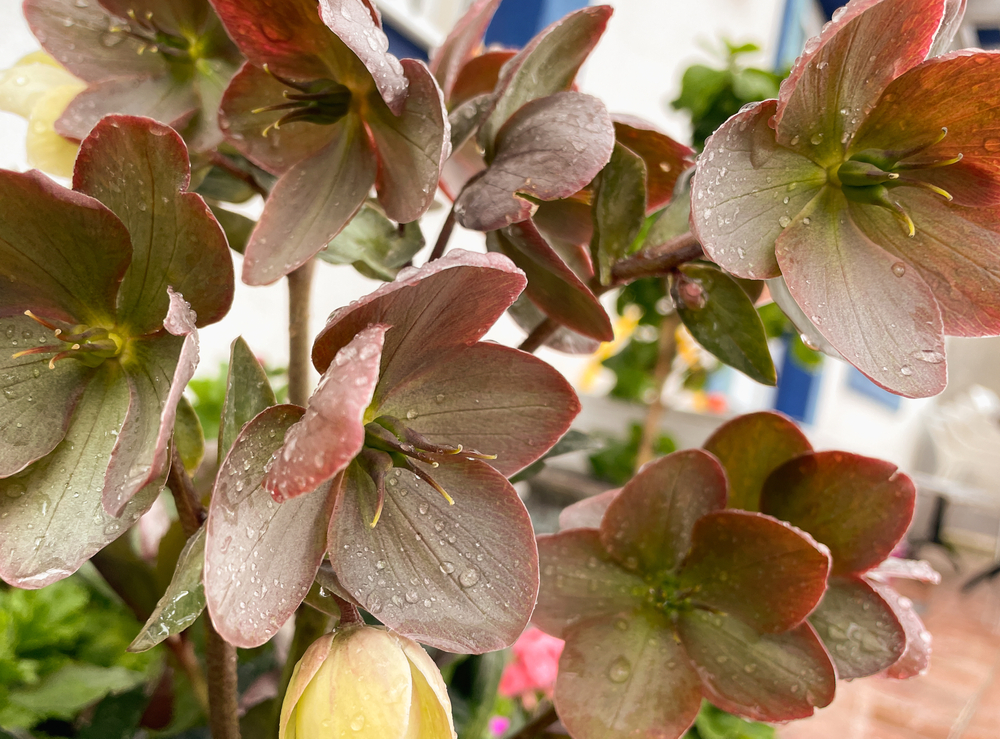
Planted in deep containers, hellebores are a good choice for winter pots due to their flowers and foliage. They flower in winter in such a wide variety of colors with spots, stripes, and bicolors in shades of white, pink cream, yellow, red, purple, blue and blue-black.
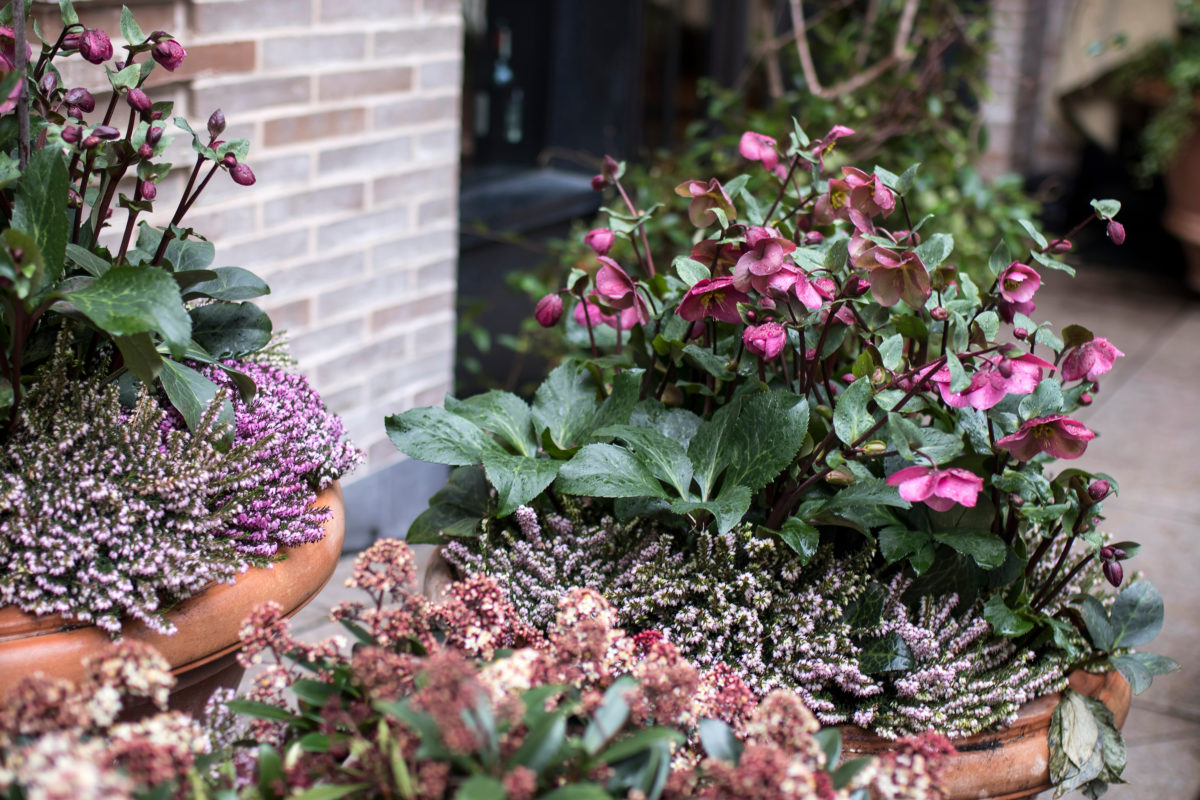
At other times of the year, they remain evergreen with pretty palm-like leaves. They prefer an area of semi-shade or half-day sun and they need loamy soil with a little added lime to do well.
Approximate size: 1 – 2 feet
USDA hardiness zone: 6 – 9
Cyclamens
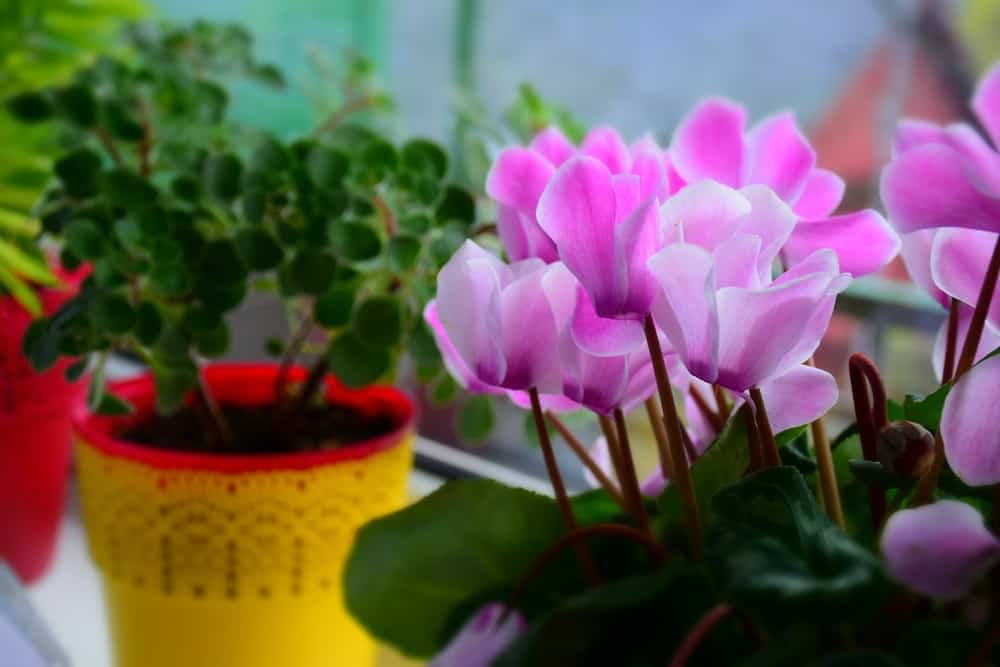
For spots of color indoor and outdoors, cyclamens are the ultimate winter tuberous perennial.
The distinctive flowers come in a variety of colors from white to pink, salmon and red and new varieties now have frilly double flowers in yellowish-greens, purples and magentas. The flowers grow on stalks about 12 inches tall with petals that bend back into a diving pose.
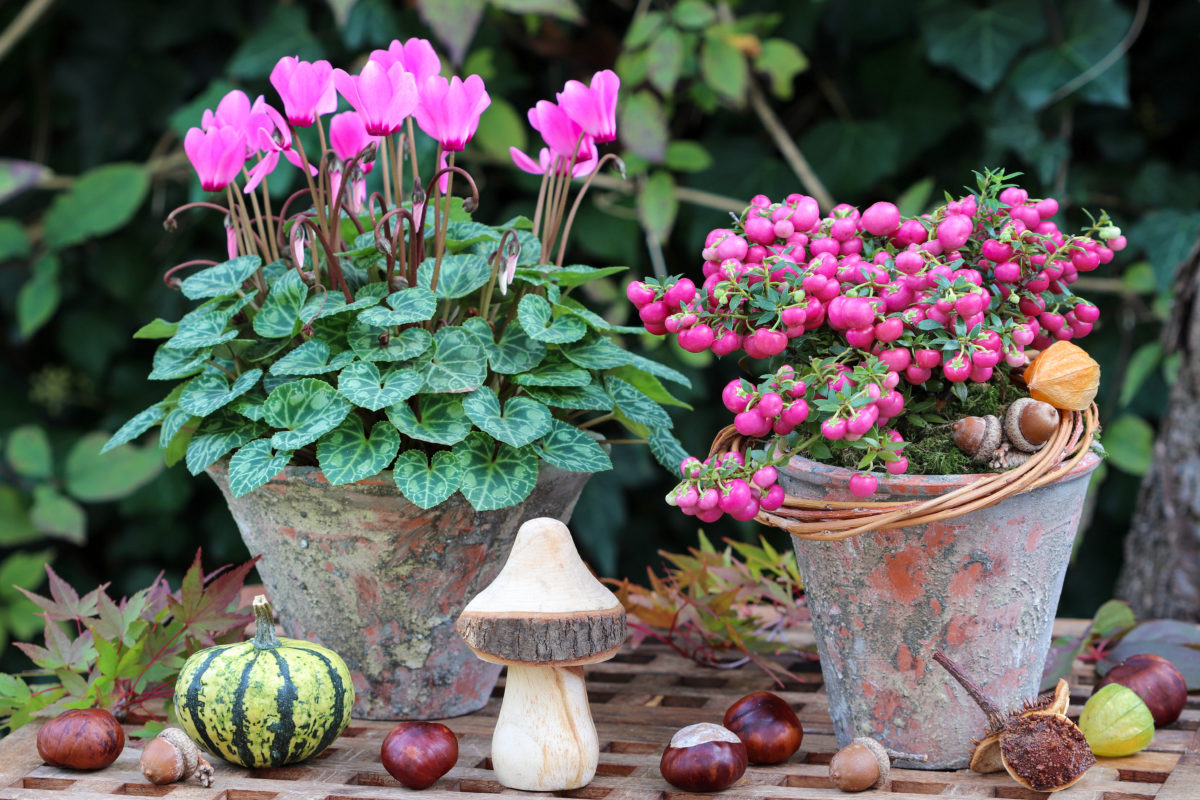
They prefer to grow in shade and will not do well with too much heat, hence their use as an indoor plant. They also flower in winter which makes them unusual, and a good choice for this list.
Plant in compost-enriched potting soil. Water below the leaves and allow to drain thoroughly, as watering the leaves could cause them to rot. They are not heavy feeders and will require a water-soluble fertilizer every two months at the most.
Cyclamens go dormant in summer and the leaves will die down. You can save your pots until the next season by cutting off all the foliage and placing your containers in a dry shady spot without food or water. When you start seeing new growth, bring them out, feed and start watering.
Approximate size: 6 – 16 inches
USDA hardiness zone: 5 – 9
Ornamental Grasses
Festuca glauca
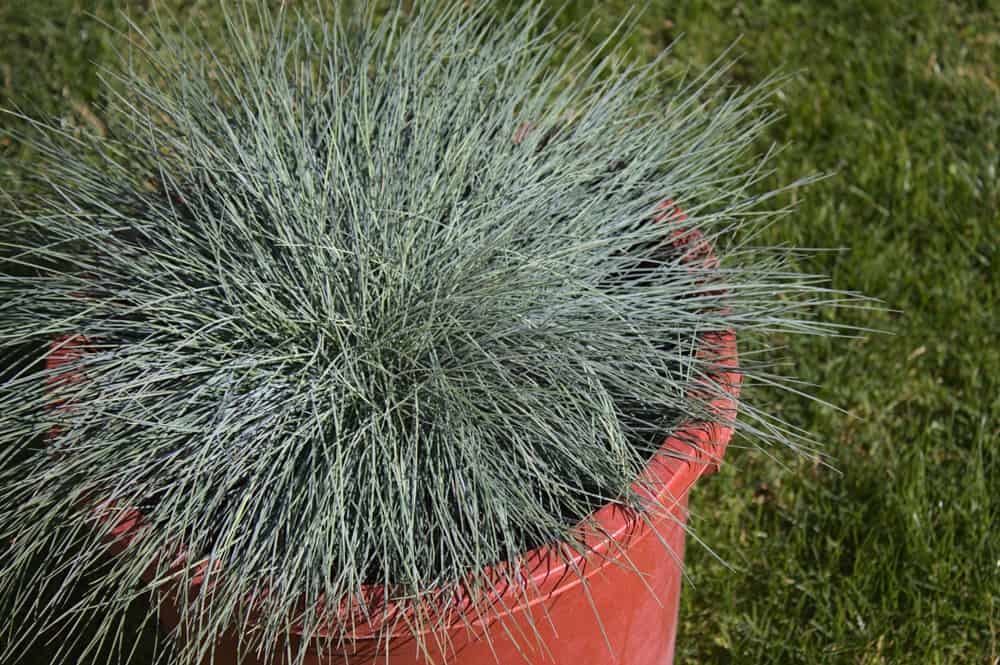
This spikey ornamental grass with a steely blue color contrasts well with other plants in a container or makes a statement in smaller colored pots planted individually.
It’s a small, compact grass that is very hardy against cold and frost and can be planted in full sun or partial shade.
This evergreen needs regular watering (but not too much – it hates waterlogged soil) and requires little maintenance. Hand comb out dead blades of grass and remove flower heads to keep them neat.
Approximate size: 7 – 11 inches
USDA hardiness zone: 3 – 9
Carex comans
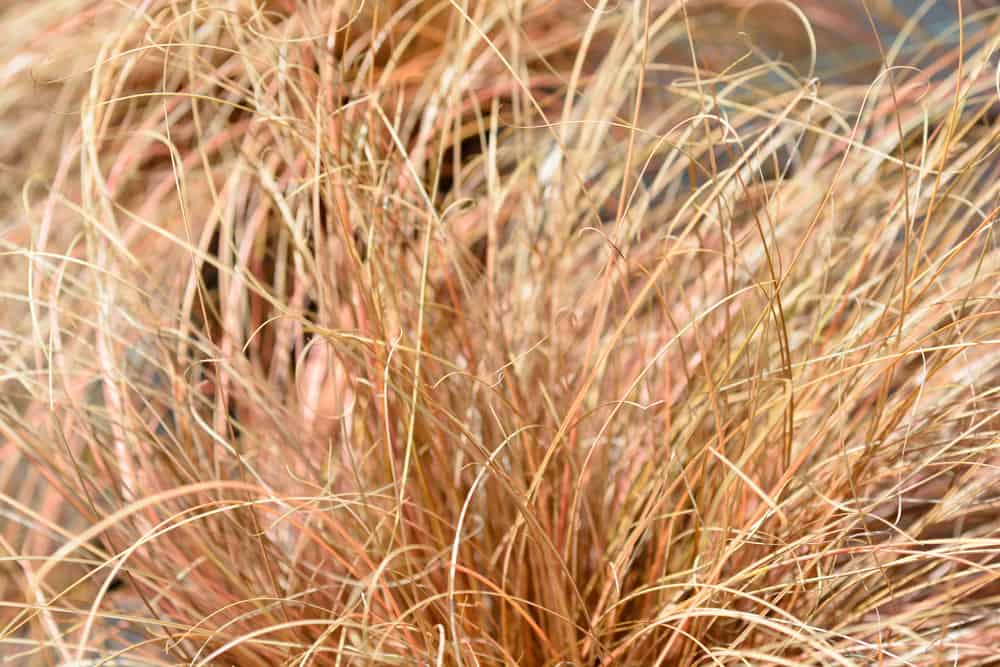
This soft, attractive grass sweeps in waves with thin leaves that are golden brown in the fall. In containers, it is often used as a filler that cascades down the side of a container.
It prefers moist soil with regular watering and it can even take some standing in water, so the choice of plants to combine with it need to have the same requirements. It can also be grown in full sun or shade.
This variety is originally from New Zealand so does need a bit of care in winter with a good mulch and protection from the harshest of the cold.
Approximate size: 12 – 16 inches
USDA hardiness zone: 5 – 11
Helictotrichon sempervirens
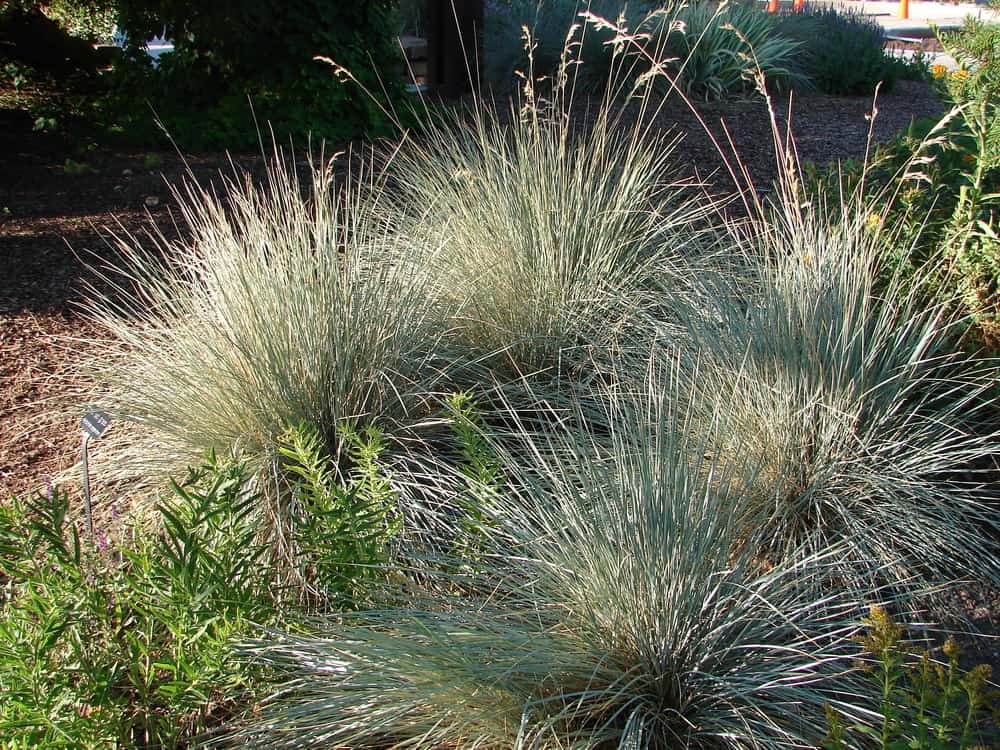
Similar in color to Festuca, this blue oat grass is a larger statement ornamental grass with narrow, spiky blades that form a neat rounded clump.
In warmer climates, it is known as an evergreen, but in colder zones, it will be semi-evergreen.
In late winter it could do with a generous cutback. Plant in full sun and in well-draining soil. It requires medium watering and is very low maintenance.
Approximate size: 2 – 3 feet
USDA hardiness zone: 4 – 8
Deschampsia cespitosa
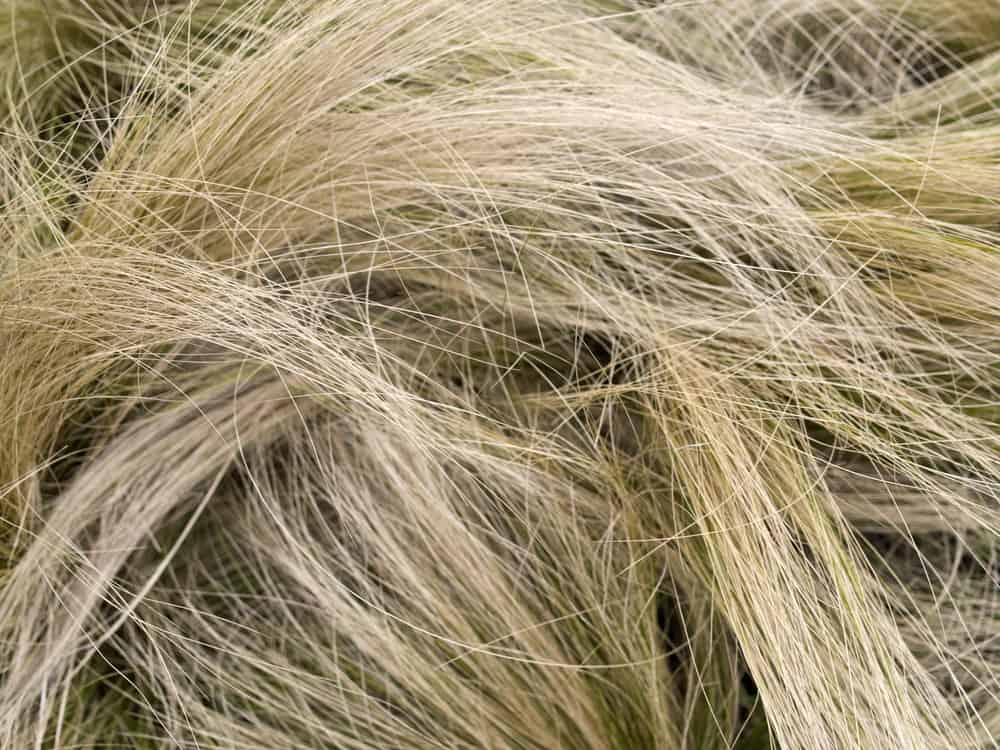
Native to North America, tufted hair grass is – as its name suggests – a tufted grass. It has long stalks of light-airy inflorescences in summer that make it ideal for pairing with flowering plants for a wild meadow look. Alternatively, it can be used as a tidy low growing grass in winter.
It grows in full sun and partial shade in rich soil and needs plenty of water. Depending on the zone it is planted in, it can be evergreen or semi-evergreen. Flower stems can be cut in the fall, or they can be left for more interest during winter.
Approximate size: 1 – 4 feet
USDA hardiness zone: 2 – 8
Shrubs and Small Trees
Boxwood
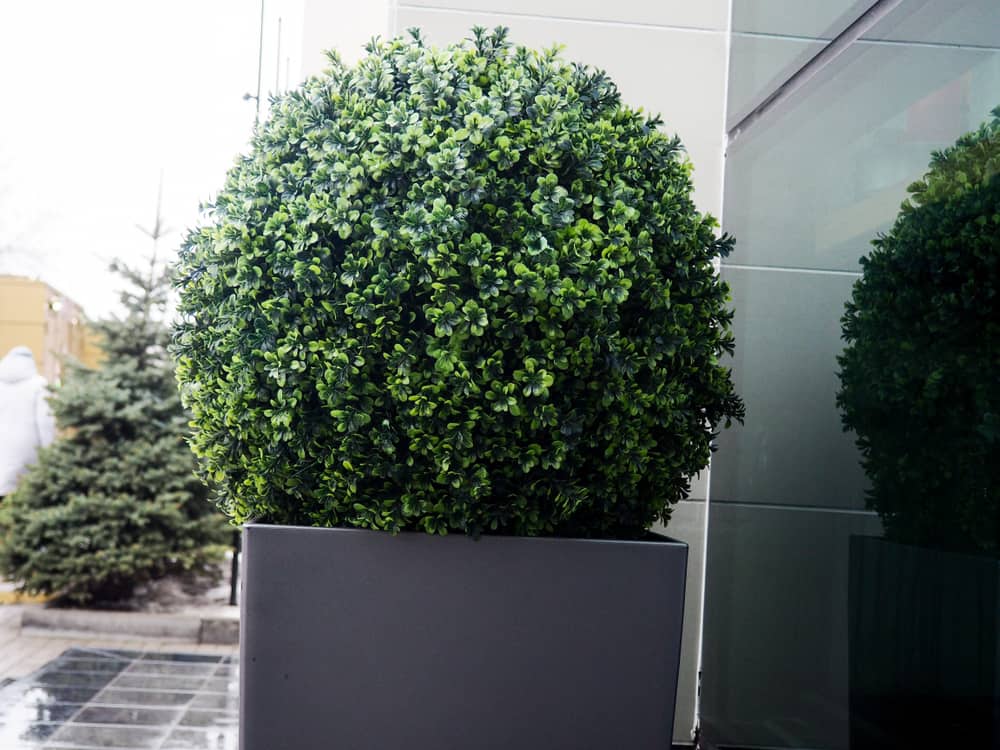
For a plant that can be shaped into topiary and hedges, you can’t go wrong with Buxus species. There are also many species that can take the cold and remain evergreen during winter when almost everything else is brown.
A series of round containers of the same size and materials planted with boxwood shaped into balls, for example, are often found in formal gardens. Cutting boxwood into the shape of the container, like square for square pots or rectangular for rectangular pots, are a designers’ dream for garden design.
They grow very slowly and will only need a monthly trim to keep neat and in shape. Plant in rich soil and keep well-watered until well established. Feed with an organic fertilizer twice a year. Use a mulch in the harshest cold and avoid snow piling up on top of them.
Approximate size: 3 – 4 feet, untrimmed
USDA hardiness zone: 4 – 9
Camellias
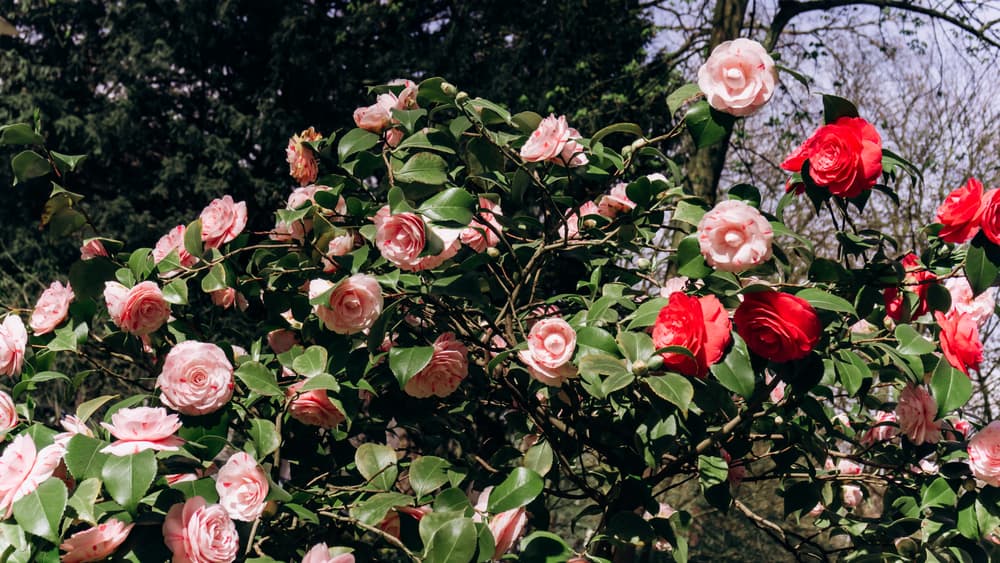
Winter flowers are always a winner, but not all varieties of camellias can take really cold winters. However, there are now camellias specially bred to withstand the cold winters down to -10F. They bloom from autumn, through winter and into spring for a bright, fragrant touch of color in a large pot.
Camellias like well-draining acidic soil with a pH of 5.0 to 6.5. Use a potting medium made for azaleas or rhododendrons for the best results.
Potted camellias need plenty of water, but don’t allow the pots to stand in water. They dry out fast, so a mulch of pine bark will help save water. Prune immediately after flowering and avoid any pruning when buds are forming during the long growing season.
Approximate size: Confined to a pot and variety dependant
USDA hardiness zone: 6 – 10
Holly
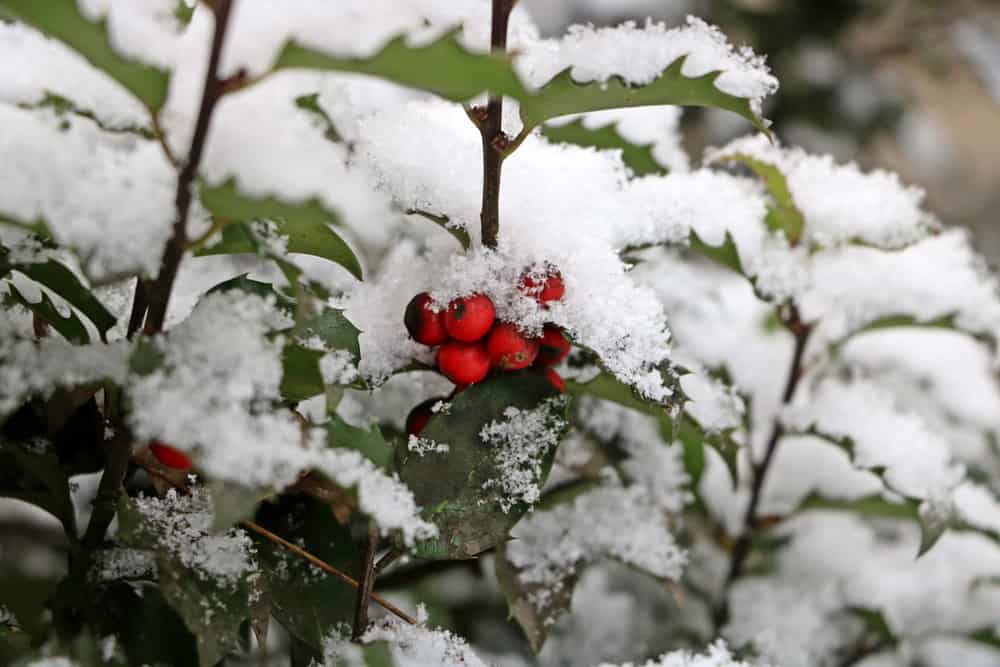
Hollies (Ilex sp) are one of the hardiest plants with some species surviving down to Zone 4. It is important to choose specific varieties for each zone to get the best out of them.
They do well in containers in rich well-draining soil. Holly can be trimmed into topiary or hedges, but free-flowing plants will give you the best décor in fall and winter when they produce their iconic red berries.
If left unchecked, they grow into large shrubs or trees. Although a container will limit growth, holly will do best with regular pruning. This can be done at any time of the year, but for berry production, prune mainly in spring and feed them with a good dose of organic fertilizer.
Once established, they need very little care, but will need to be watered more often in hot, dry weather. They grow in full sun, but will take a little shade and produce masses of white flowers in summer.
A versatile pretty plant, if you choose the right variety for your area, they remain attractive year-round.
Approximate size: Confined to a pot and variety dependant
USDA hardiness zone: 4 – 10
Loropetalum
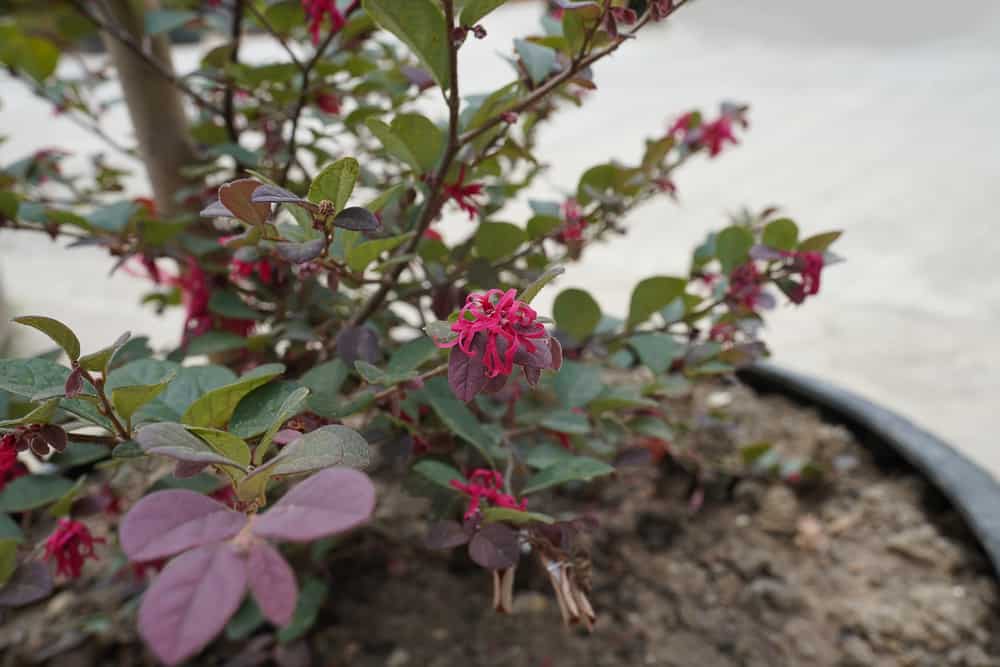
These evergreen shrubs are grown for their foliage – some varieties with green leaves and others with dramatic plum-colored foliage – and their fringe-like flowers, giving them the common name Chinese fringe-flower.
They have a dense habit and will sweep over a container with masses of flowers appearing in spring and fall. These shrubs prefer rich, well-draining soil and a position in full sun or partial shade.
They are not as cold-hardy as some of the others on this list, so care should be taken in the harshest climates to protect them. Loropetalum can grow into a small tree if left unchecked. But if needed, they can be kept small by a good prune in spring before flowering.
At this time, they can be given a dose of organic fertilizer. Water regularly to establish them, then reduce watering but do not leave to dry out completely.
Approximate size: 3 – 15 feet
USDA hardiness zone: 7 – 10
Colorful Foliage
Ornamental Kale
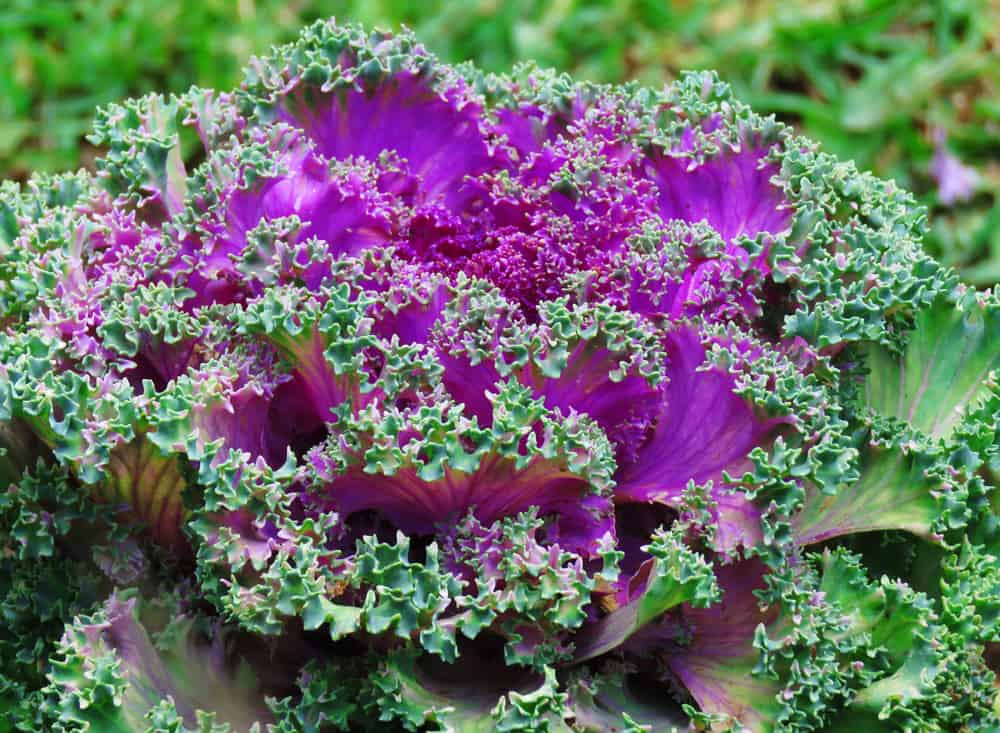
A favorite for color in a container is ornamental kale (Brassica oleracea). These striking plants get better as it gets colder and they even like frost, when colors intensify.
They come in a variety of colors – deep rich purple and burgundy, with touches of cream and pink. Plant with other leafy plants, grasses or succulents for a great display. Some varieties have smooth leaf margins while others are frilly.
As their name suggests, they are grown purely for their colorful leaves, but they are in fact edible like their family members, cabbages and kale.
Plant in rich potting soil with other plants in a mixed container. Once in, do not feed with any additional fertilizer or they may start to lose color and bolt. Plant in full sun and water regularly.
As it’s considered a biennial, it can survive the winter and go through to another year, but will often look tired and a bit leggy. It’s best to treat as an annual and replant every year.
Approximate size: 6 – 35 inches
USDA hardiness zone: 2 – 11
Heucheras
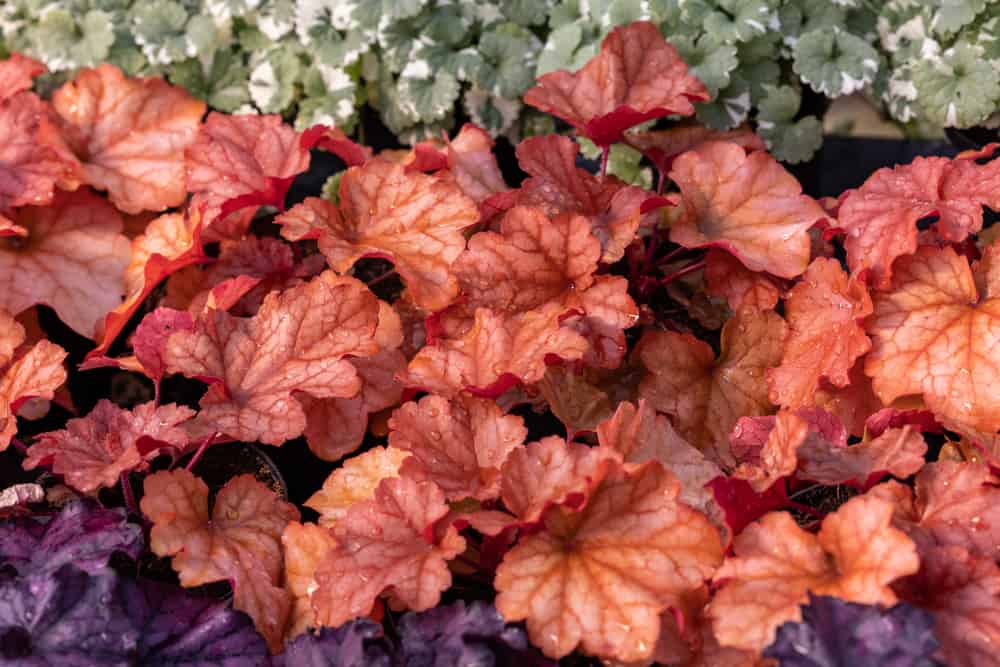
Heucheras (coral bells) are now available in such a wide variety of foliage colors, it’s hard to choose which ones to take home from the nursery. For leafy color combos in a container, these are winners requiring very little maintenance.
They are tolerant of heat, cold, humidity and drought – the ideal plant. They do well in containers in rich, well-draining soil. Plant as single plants for a striking contrast in a colored container or in a group with other flowering and foliage plants.
As long as they are watered more often during hot, dry periods, they are medium water users. Look out for some species that will grow in Zone 3 and on the other end of the scale in Zone 10.
They produce small tubular-shaped flowers on stalks up to two feet tall in late spring and early summer. To top it all off, these nectar-rich blooms are butterfly and hummingbird magnets.
Approximate size: 6 – 8 inches
USDA hardiness zone: 4 – 9
Flowering Annuals
Pansies and Violas

The ultimate filler plants for long-lasting flowers and color in any pot are pansies and violas. They come in hundreds of different colors and flower sizes. Plus, they’re incredibly easy to grow.
The difference between the two is slight, with pansies having larger but fewer flowers than violas. Both, however, do well in full sun with at least six hours of light per day. They can grow in quite shady areas, although they may not bloom as well.
Plant in well-composted potting soil and keep well-watered. Feed every 4-6 weeks with a balanced fertilizer for the most blooms possible. Choose a fertilizer low in nitrogen for more flowers than foliage.
Although these are considered short-lived perennials, they are more often grown as annuals. They are also edible – great for adding color to a wintery dish.
Approximate size: 4 – 8 inches
USDA hardiness zone: 7 – 11
Calendula
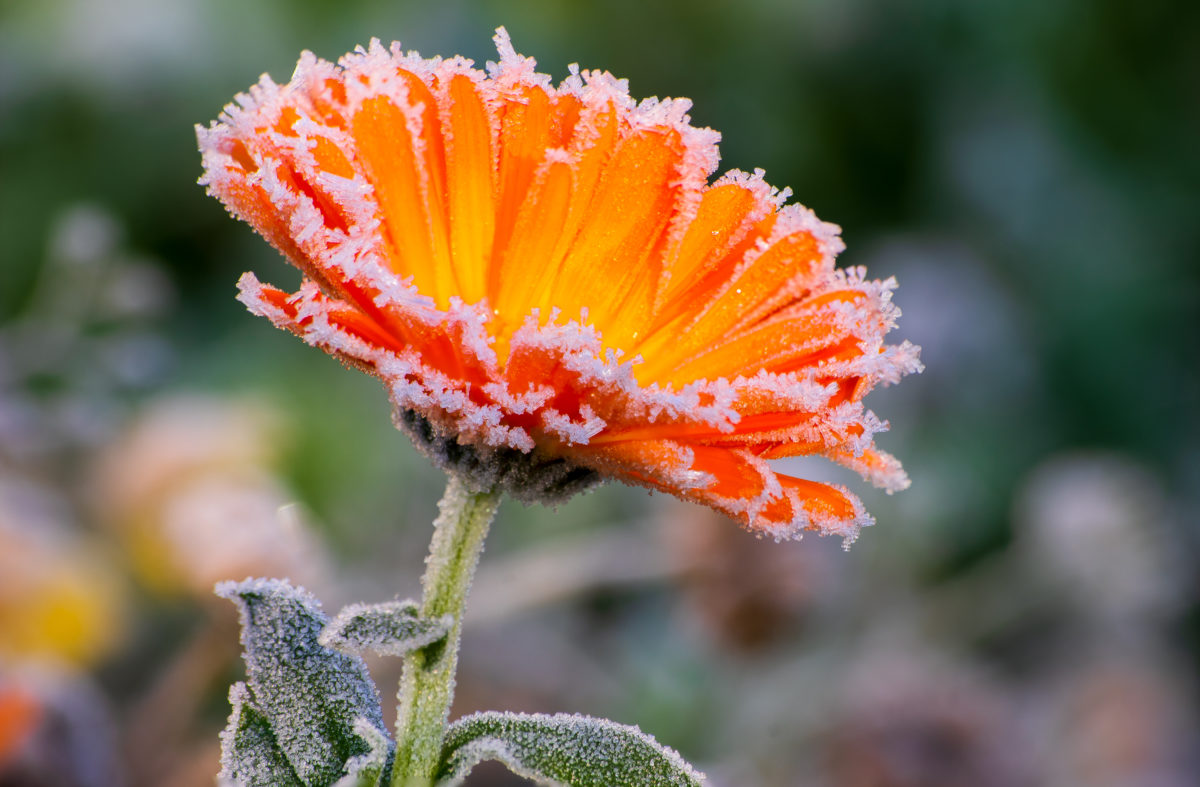
For sunny yellow color in winter, you can’t go wrong with Calendula officinalis. They are easy to grow and can handle light frost – though a hard frost will kill them. They make excellent companion plants and attract several species of beneficial insects that prey on destructive insects like aphids.
Plant in containers with winter vegetables like brassicas and lettuce, or group with other winter-flowering annuals or perennials.
Grow in full sun and plant in rich, well-draining soil. Feed monthly with a liquid fertilizer for a constant supply of flowers. Pinch out the growing tips to make the plants bushier and remove any spent blooms to encourage more.
This plant is also considered an herb and is useful in the kitchen too.
Approximate size: 12 – 15 inches
USDA hardiness zone: 3 – 10
Winter Bulbs
Snowdrops

Although there are several bulbs that will start to bloom in late winter (tulips, daffodil and amaryllis) they perform their best in spring. One of the earliest to bloom and thus included in this list are Galanthus species.
Snowdrops are unique in that they have specially hardened tips that are able to break through frozen soil and grow. They also have ‘anti-freeze’ proteins that prevent ice crystals from forming and damaging plant cells. Their plant tissue remains intact and can easily forge ahead as temperatures rise.
As a woodland plant, snowdrops prefer similar conditions. However, bright light is usually better and soil that is rich with leaf mold and organic matter will keep these bulbs looking their best.
Plant snowdrops in containers on their own or with other plants like annuals and leafy plants like ivy. The bulbs are small and can be planted close together in a pot. Avoid the edges of the container as pots can freeze and have an adverse effect on the bulbs.
Water well and make sure the pots drain well. Keep moist but not waterlogged. Once the bulbs have stopped flowering, the leaves will die down. At this stage, give them a good boost of specialized bulb food to set them up for the next season.
They can be divided every three years or so as they get too big for their container.
Approximate size: 3 – 6 inches, depending on the variety
USDA hardiness zone: 3 – 7
